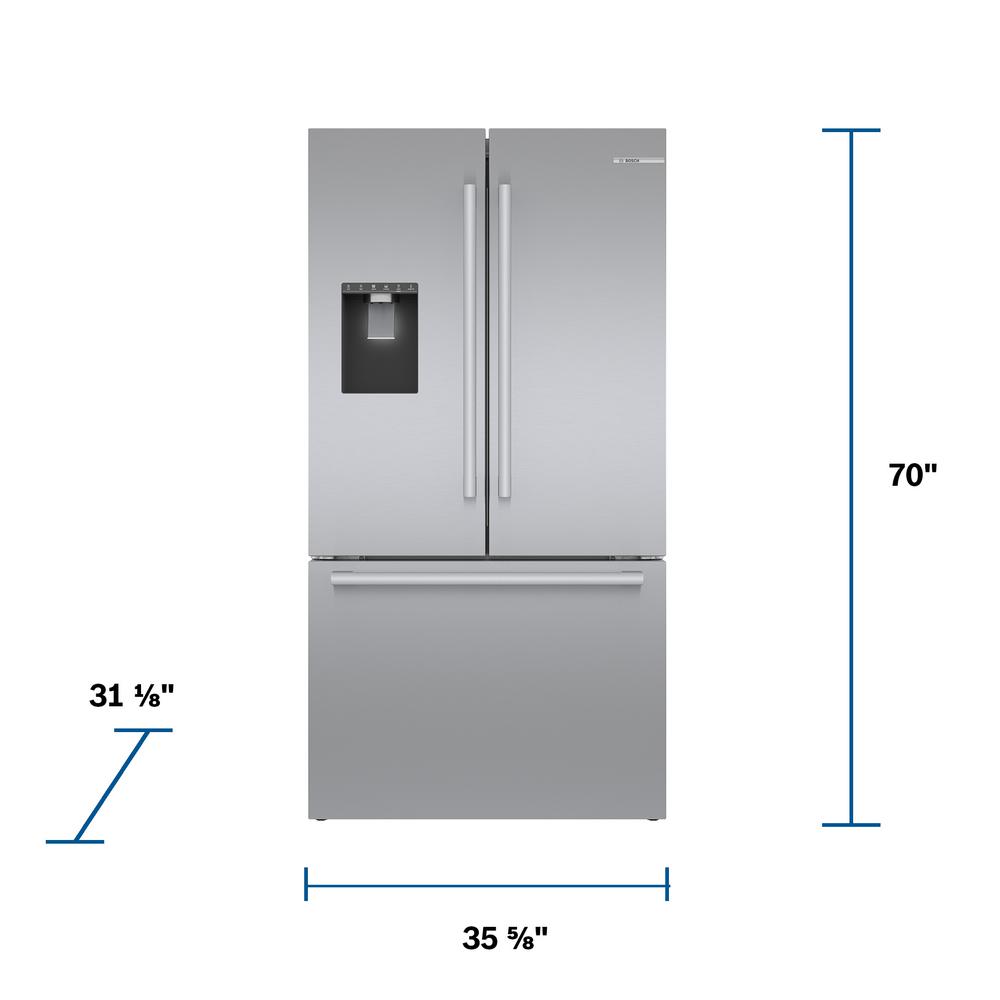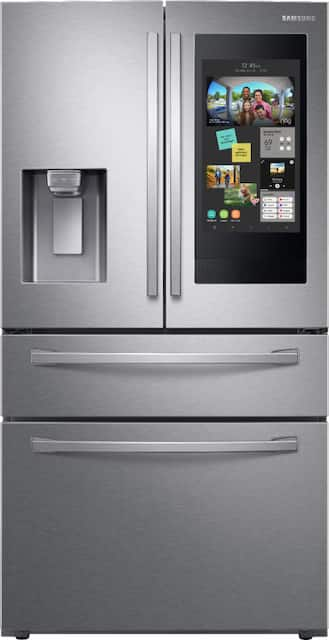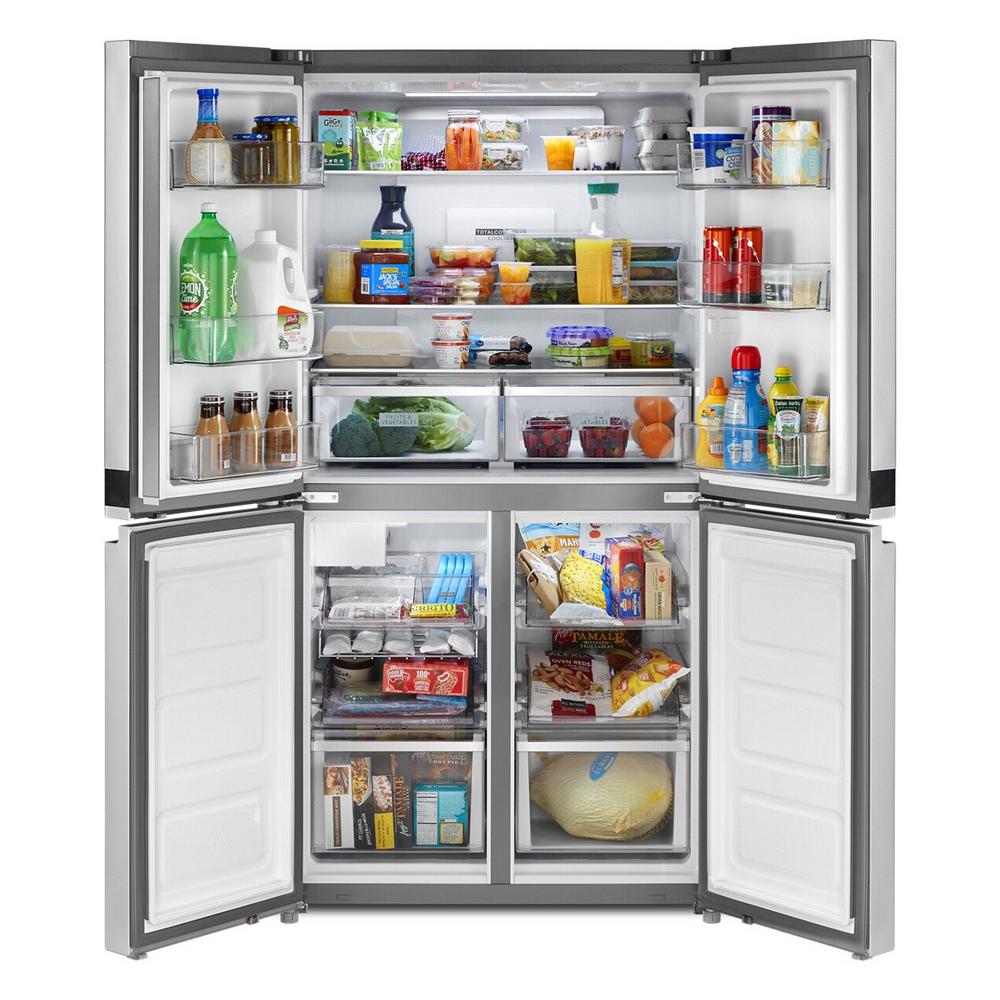Samsung 22 cu. ft. 4-Door French Door, Counter Depth Refrigerator with 21.5” Touch Screen Family Hub™ in Stainless Steel
FlexZone Drawer – A flexible drawer with four different temperature settings for flexible storage. Metal Cooling – Locks in cold and seals in freshness.
Connected Living at Your Fingertips
The Family Hub™ refrigerator helps you connect to what’s most important: your family and home, whenever and wherever. Family Hub™ lets you see inside your refrigerator, manage your family’s calendars, stream music, see who’s at the front door and much more, all right from your fridge.
-
I want to manage my life with ease.
See who’s at the front door. Monitor multiple rooms. Adjust the thermostat, all from the Family Hub.™
FlexZone Drawer
A flexible storage drawer with four different temperature settings and an adjustable Smart Divider to stay organized.
Metal Cooling
The stainless steel paneling helps maintain consistent temperature throughout the refrigerator.
Additional information
| Product Dimensions with Hinges, Handles and Door | 35 3/4" W x 70" H x 31" D |
|---|---|
| Product Dimensions without Hinges and Door | 35 3/4" W x 68 7/8" H x 24 1/8" D |
| Product Dimensions with Door without Handles | 35 3/4" W x 70" H x 28 1/2" D |
| Shipping Dimensions | 38 1/4" W x 75 3/4" H x 30 5/8" D |
| Net Depth with Door Handle | 31" |
| Net Height with Hinge | 70" |
| Net Height without Hinge | 68 7/8" |
| Net Depth w/o Door Handle | 28 1/2" |
| Depth without Door (in) | 24 1/8" |
| Warranty | 1 Year 1-Year Parts and Labor on Refrigerator 5 Years 5-year Parts and Labor on sealed Refrigeration system only* *Compressor, evaporator, condenser, drier, connecting tubing 10 Years 10-year Part and 5- year Labor on Digital Inverter Compressor |






by Kimberly
amazing product. lets start off with the space. the french doors help with easy access to everything. the middle drawer is where we place drinks. freezer area is wide and spacious. the camera function is awesome if you cant remember what is in your fridge. the hub is what makes this fridge for me. you can add photos, wallpapers, listen to music while in the kitchen.
by Phoenix
Love my fridge keeps everything at right temp and has great space saving features the ice maker and water disposer is great and the family hub is amazing never thought I’d use all the features when my husband suggested it but I use them everyday.